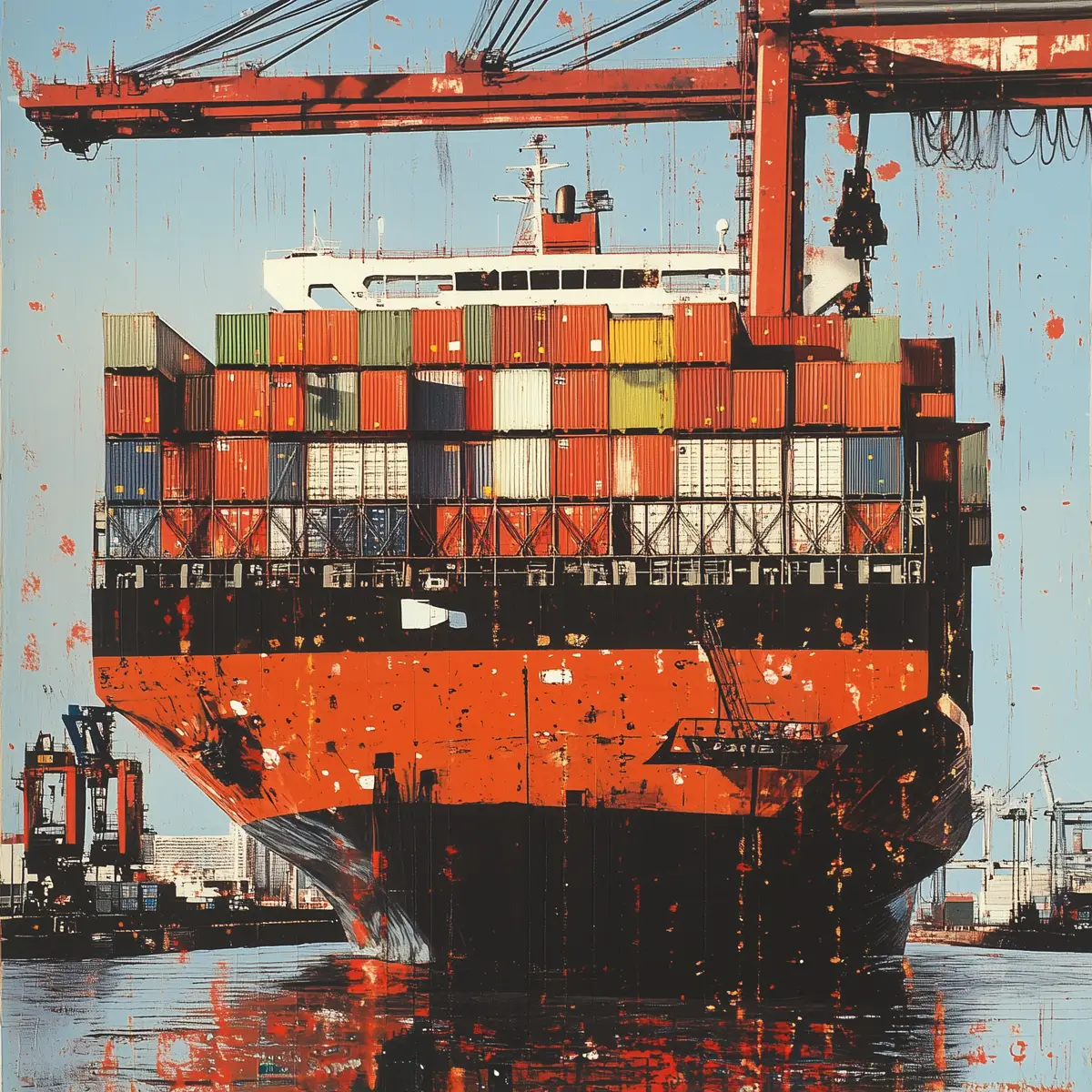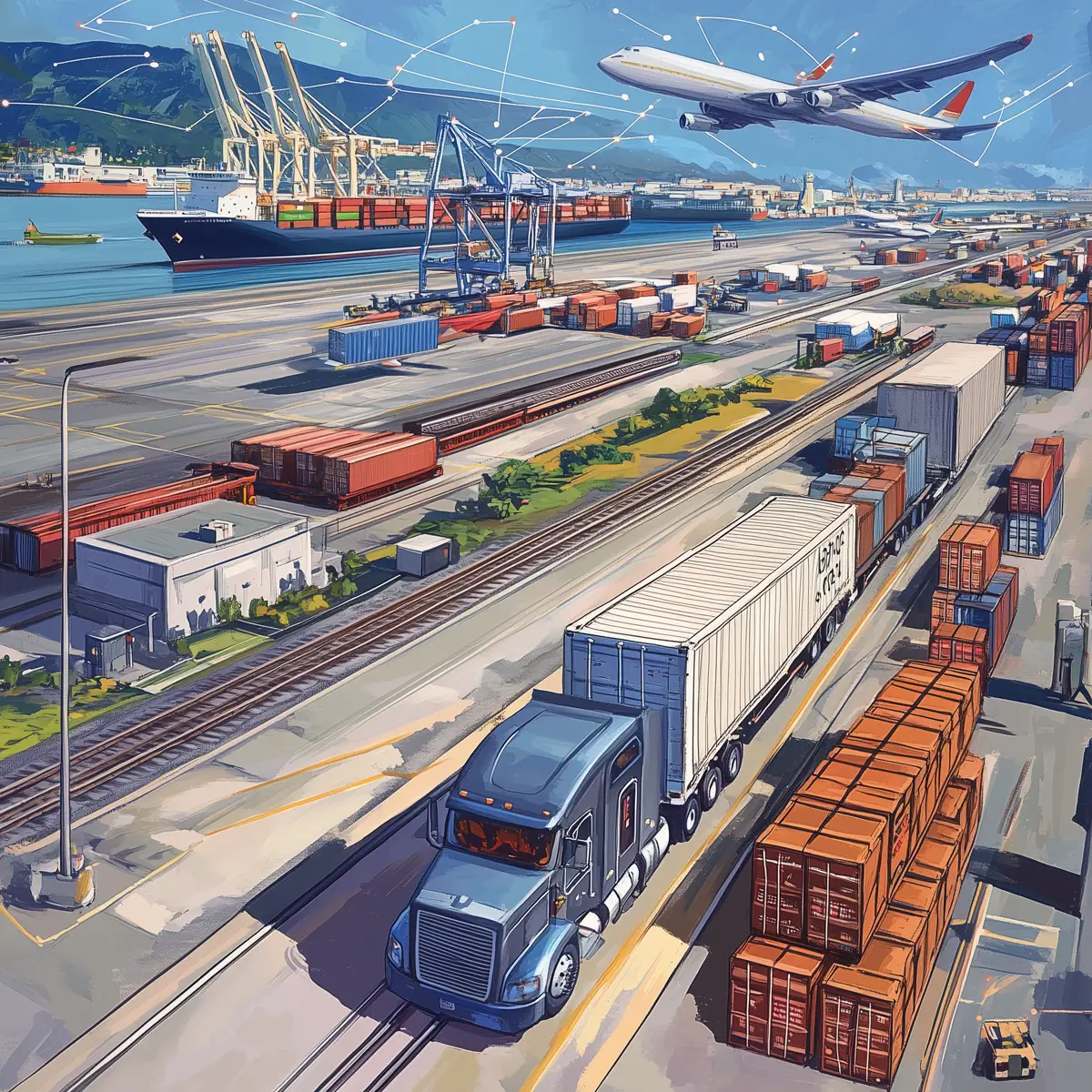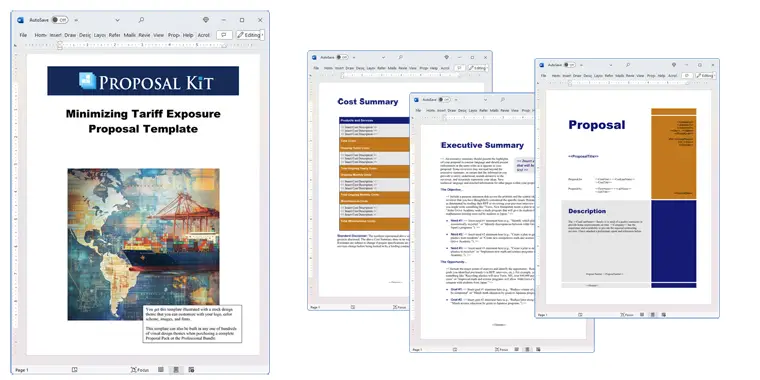How to write your Minimizing Tariff Exposure Proposal Template
We include this 23 page layout with every Proposal Pack. If you want this template to have a different visual design theme than the one illustrated here, purchase any Proposal Pack design and create this template using the purchased design theme. This template is included in every Proposal Pack. If you get a Proposal Pack or the Professional Bundle, you can also make any variation of this template with different chapters to suit your needs.
We typically include more chapters in the templates than most people will need to give everyone more variety in the chapters they may need. You can trim down a long template by removing pages you do not need or combining multiple chapter topics into one page.
 DOWNLOADABLE, ONE-TIME COST, NO SUBSCRIPTION FEES
DOWNLOADABLE, ONE-TIME COST, NO SUBSCRIPTION FEES If you need this template on DVD media order from our Amazon shop.
If you need this template on DVD media order from our Amazon shop.
You can also create countless variations of this document to suit your needs using the included library of 2200+ chapters if ordering a Proposal Pack or Pro Bundle.
 What Our Clients Say
What Our Clients SayI am working on my proposal using your kit and so far it is just as easy as you promised."
Michele Caron
Related Article
Related Video
Related Templates
- Import Export Services Proposal
- Customs Clearance and Forwarding Proposal Template
- Commodities Trading Imports and Exports Proposal
- Supply Chain Logistics Project Proposal
- Transportation Logistics Project Proposal
- Manufacturing and Distribution Proposal
- Commodities Trading Proposal
- Growing Company Globally Proposal
- Relocate Manufacturing Domestic Proposal
- Importing Used Farm Equipment Proposal
- Supply Chain Disruption and Risk Report
- Supply Chain Optimization Proposal Template
- Labor Cost Management Proposal Template
- Community Impact Mitigation Proposal Template
- Market Access Recovery Proposal Template
- Workforce Efficiency Proposal Template
What's the Best Way to Write Your Minimizing Tariff Exposure Proposal?
Are you navigating the turbulent waters of global trade, seeking ways to shield your business from the adverse effects of new tariffs? Look no further than Proposal Kit as your proven solution for creating a proposal aimed at reducing tariff exposure. This robust tool offers a comprehensive template and software package designed to simplify the proposal-writing process. With Proposal Kit, you can use its line item quoting database system that helps in summarizing costs, providing quotes, making estimates, and managing budgets.
If you're in a situation where a proposal is necessary to pitch your ideas to mitigate tariff impacts on your imported goods, the Proposal Kit is tailored for you.
What Types of Projects Are Minimizing Tariff Exposure Proposal Written For?
When businesses face increased tariffs on imported goods, several projects can help them navigate these challenges. These are the types of situations where a well-written proposal becomes critical.
- Establishing Free Trade Zones
- Optimizing Supply Chain Logistics
- Negotiating Better Trade Terms
- Investing in Local Manufacturing
- Shifting Supply Chains to Low-Tariff Regions
- Partnering with Domestic Suppliers
- Implementing Cost Reduction Strategies
- Using Technology for Supply Chain Efficiency
- Engaging in Political Lobbying for Tariff Relief
- Developing New Market Strategies
- Improving Inventory Management
- Exploring Alternative Raw Materials
- Enhancing Supplier Relationships
- Creating Joint Ventures with Local Companies
- Adjusting Product Pricing Strategies
- Conducting Impact Assessments
- Exploring Currency Hedging Options
- Increasing Efficiency in Customs Processing
- Establishing Strategic Alliances
- Pursuing Government Incentives
Chapters this template is built with
No single premade template fits every situation like this, but with Proposal Kit's customizable library, you can create a proposal tailored to your unique needs. Here's a sampling of some of the thousands of available chapter templates you can use in the Proposal Kit content library:
Cover Letter
Start with a professional greeting, introducing the purpose of your proposal and setting the stage for your minimizing tariff impact strategies. Detail why minimizing tariff exposure is crucial for maintaining your company's market position, and express appreciation for the opportunity to present your solutions.
Title Page
Clearly display the proposal's title, your company's name, and the date, making it immediately identifiable. This ensures the document looks polished and professional, reflecting the seriousness with which you approach the tariff challenges.
Table of Contents
Provide an organized overview of the proposal's structure, ensuring easy navigation for the reader. Highlight key sections like Strategic Planning and Supply Chain Optimization, enabling stakeholders to find areas of interest quickly.
Overview
Set the context by highlighting the challenges posed by new tariffs and your business's need to address them. Offer a snapshot of how these tariffs impact your industry and the urgency of implementing protective measures.
Executive Summary
Summarize the key points of the proposal, emphasizing the benefits of the proposed strategies and expected outcomes. Focus on how your strategies will protect profit margins and enhance the company's competitive edge.
Fair Trade
Discuss the principles of fair trade and how adhering to them can help mitigate tariff impacts. Examine how aligning with fair trade practices can open new markets or reduce reputational risks associated with tariff changes.
Tariffs
Detail the specific tariffs affecting your business and analyze their immediate and long-term effects. Include data and charts to illustrate the potential financial impact, making it clear why action is necessary.
Challenges
Outline the primary challenges your company faces due to the new tariffs and the urgency of addressing them. Discuss issues like cost increases, supply chain disruptions, and potential loss of market share.
Analysis
Provide a thorough analysis of the current market conditions and how tariffs are influencing your industry. This section should include data on recent changes in trade regulations and competitor adaptations.
Impact Statement
Clearly articulate the potential impact of tariffs on your business operations and profit margins. Use projections and situations to demonstrate how tariffs could affect your bottom line if no action is taken.
Restructuring
Discuss potential restructuring strategies to adapt to the new tariff landscape and maintain competitiveness. Suggest organizational changes, such as altering supply chain routes or diversifying product lines.
Logistics
Explore how logistics adjustments can help minimize costs and streamline operations amidst tariff changes. Propose solutions like optimizing transportation routes or consolidating shipments to reduce expenses.
Supply Chain
Detail strategies for optimizing the supply chain to reduce exposure to tariff-related costs. Consider alternative suppliers in low-tariff regions or investing in technology to increase supply chain efficiency.
Strategic Planning
Lay out a plan that incorporates mitigating tariff impacts as a key objective. Include timelines, responsible parties, and measurable outcomes to ensure accountability and track progress.
Risk Management
Identify and evaluate the risks associated with tariffs and propose mitigation tactics. Discuss insurance options or create contingency plans to handle sudden tariff increases or regulatory changes.
Negotiations
Highlight the importance of negotiations with suppliers and trade partners to secure better terms. Provide examples of past successful negotiations or outline planned discussions to lower costs.
Trade Partners
Discuss the role of trade partners in your strategy and how relationships can be used. Emphasize the benefits of strong partnerships, such as shared resources or collaborative problem-solving.
Relationship Management
Emphasize the importance of maintaining strong relationships with suppliers and other stakeholders. Discuss strategies for regular communication and partnership-building activities to ensure mutual benefits.
Cost Savings
Identify areas for cost savings and how they can help offset increased tariff expenses. Suggest specific initiatives like energy savings, process improvements, or bulk purchasing agreements.
Conclusions
Summarize the proposal and reiterate the necessity of the outlined strategies to minimize tariff exposure. Reinforce the urgency of adopting these measures to safeguard your company's future.
Company Information
Provide relevant details about your company, including history, mission, and key personnel. Highlight your company's strengths and past successes to build credibility and trust with stakeholders.
Appendices
Include supplementary information or documents that support the proposal's content. This might be detailed financial data, market research reports, or legal documents related to tariff regulations.
Back Page
Offer contact information and any additional notes or acknowledgments for the reader. This ensures your proposal concludes with a personal touch, inviting further dialogue and collaboration.
Use cases for this template
Navigating International Trade Turbulence
The Challenge
Jordan, the owner of Global Imports Inc., confronted a significant obstacle as new tariffs began to jeopardize his international trade business. These tariffs, unexpectedly imposed, threatened to erode profit margins and disrupt established trade routes. As costs surged, Jordan realized the urgency of developing a robust proposal to outline solutions that would minimize the financial hit and preserve his company's competitive edge in the market. Without a plan, the sustainability of his business was at risk.
The Solution
Seeking a way to swiftly address these challenges, Jordan turned to Proposal Kit. With its extensive library of comprehensive templates and detailed chapters, Proposal Kit offered a structured framework that was both adaptable and precise. By using the software's integrated quoting database, Jordan was able to prepare an exhaustive cost analysis, identifying areas where financial efficiencies could be gained. Additionally, Proposal Kit's planning templates allowed him to create plans that included alternative sourcing methods and potential new trade partnerships to mitigate the tariff's impact.
The Implementation
Armed with a clear, actionable plan, Jordan employed Proposal Kit to develop a tailored proposal that accurately communicated his strategies to all stakeholders involved. The proposal incorporated detailed logistics plans, demonstrated potential cost savings through optimized supply chain strategies, and highlighted opportunities for alliances with suppliers. By focusing on actionable steps and clear data representation, Jordan ensured the proposal was not only comprehensive but also convincing.
The Outcome
The reception to the proposal was overwhelmingly positive. Suppliers and trade partners responded favorably, resulting in successful negotiations that reflected the adjustments Jordan had outlined. This proactive approach helped Global Imports Inc. to significantly reduce costs associated with the new tariffs, thus maintaining its market position. Jordan's careful planning and execution, supported by Proposal Kit, allowed his company to continue flourishing despite the external economic pressures.
Enhancing Operational Efficiency Amid Rising Tariffs
The Challenge
At Tech Solutions Co., Patricia, a skilled logistics manager, faced a pressing challenge. With tariffs escalating, her task was to develop an internal proposal aimed at streamlining operations to curtail expenses. The tight deadline imposed by management only added to the pressure, necessitating a swift yet thorough response to ensure the company's operations could withstand the increased financial burden from tariffs. Patricia needed an efficient method to convey complex logistical strategies clearly.
The Solution
Recognizing the need for a fast and effective solution, Patricia opted for Proposal Kit, a tool renowned for its efficiency and versatility. To enhance her productivity, she integrated Proposal Kit with an AI writing tool, which assisted in generating content quickly and accurately. By directing the AI to analyze Tech Solutions Co.'s website, Patricia was able to compile company-specific data that enriched the proposal's content, ensuring alignment with the company's goals and objectives.
The Implementation
Using Proposal Kit's customizable templates, Patricia structured her proposal to address critical areas such as refining supply chain processes and implementing cost-reduction strategies. The combination of Proposal Kit's templates and AI-generated insights provided her with a well-rounded document that was both insightful and actionable. With clear, data-driven recommendations, the proposal communicated the steps necessary to navigate the tariff challenges.
The Outcome
Patricia successfully met her deadline, delivering a proposal that gained immediate approval from Tech Solutions Co.'s executive team. The recommendations outlined in the document led to significant cost-saving measures and improved operational efficiency, positioning the company to better absorb the impact of tariff increases. Her adept use of the Proposal Kit and AI technology not only met the immediate challenge but also established a framework for future operational improvements.
Building Collaborative Networks Through Strategic RFPs
The Challenge
Emma, the director at EcoTrade Alliance, was faced with the task of writing a Request for Proposal (RFP) to invite companies to form alliances to address tariff-related challenges. As a non-profit committed to promoting sustainable trade practices, EcoTrade Alliance sought to strengthen its network through these partnerships. However, Emma was relatively new to the intricacies of proposal writing and needed a structured, reliable framework to ensure the RFP was both comprehensive and appealing to potential partners.
The Solution
In search of a solution that could offer both guidance and flexibility, Emma turned to Proposal Kit. Its user-friendly interface and extensive template library provided her with the tools necessary to outline the RFP's core objectives, scope, and evaluation criteria. The software's intuitive design helped Emma embrace the proposal writing process, focusing on clarity and precision.
The Implementation
Using Proposal Kit, Emma created an RFP that was professional and thorough, ensuring each section was structured logically and coherently. The templates guided her in articulating EcoTrade Alliance's goals and expectations, making it clear what the organization sought in potential partners. Emma's RFP not only communicated the immediate needs but also the long-term vision for collaborative efforts in sustainable trade.
The Outcome
The RFP received a robust response from various quality companies, eager to form alliances with EcoTrade Alliance. Through Emma's well-written document, the organization was able to establish partnerships that enhanced its capacity to tackle tariff-related challenges. These alliances fortified EcoTrade Alliance's mission, enabling collaborative efforts to promote sustainable trade practices despite external economic pressures.
Conclusions and Recommendations
Creating a proposal to mitigate tariff exposure is not just about addressing current challenges; it's about securing your company's future in a fluctuating market. Proposal Kit provides a comprehensive solution that streamlines the entire process, from the initial concept to the final document. Whether you're negotiating new trade terms or optimizing your supply chain, the resources provided by Proposal Kit empower you to present your proposals with clarity and confidence. By using its templates and tools, you'll be well-equipped to safeguard your business against the impacts of tariffs.
Also Known As
This template may also be referred to in different ways or be used in more specialized situations, such as:
- Minimizing Tariff Impact Proposal
- Tariff Exposure Reduction Plan
- Trade Barrier Mitigation Proposal
- Import Cost Management Proposal
- Tariff Defense Strategy
- Custom Duty Minimization Proposal
- Global Trade Adjustment Plan
- Tariff Impact Mitigation Strategy
- Import Tariff Solution Proposal
- Trade Tariff Strategy Document
Abstract
 Navigating the complexities of global trade often involves confronting challenges like proposed tariff increases, which can significantly impact businesses relying on imports. To mitigate these effects, companies can use Proposal Kit, which is designed to create effective strategies to minimize tariff exposure. This resource is invaluable for creating proposals that address the intricacies of tariff policies and their effects on global supply chains, including Chinese imports.
Navigating the complexities of global trade often involves confronting challenges like proposed tariff increases, which can significantly impact businesses relying on imports. To mitigate these effects, companies can use Proposal Kit, which is designed to create effective strategies to minimize tariff exposure. This resource is invaluable for creating proposals that address the intricacies of tariff policies and their effects on global supply chains, including Chinese imports.
By using trade agreements and enhancing domestic production capacity, businesses can adapt to higher tariff rates and avoid the repercussions of broad tariffs, retaliatory tariffs, and higher costs. Proposal Kit aids in diversifying supply chains and exploring nearshoring opportunities, potentially in regions like Mexico and Canada, to navigate the intricacies of global tariff classifications.
In recent years, the evolution of tariff policies has posed increased challenges for firms involved in international commerce. Global supply chains are particularly vulnerable to shifts in tariff rates, as these can lead to price increases for consumers and elevated costs for importers and exporters. For example, tariffs on imports from China can disrupt domestic industries that are reliant on these foreign goods.
 By understanding China's share of global production, companies can plan to mitigate such impacts. The harmonized tariff schedule, which classifies goods and their applicable tariffs, remains an important tool for firms aiming to maintain competitive advantage through optimized logistics and supply chain efficiency. Companies might also consider investing in domestic manufacturing to increase self-reliance and reduce exposure to foreign country tariffs. Using Proposal Kit can streamline this process, allowing businesses to create proposals that not only address immediate fiscal year challenges but also secure long-term economic stability.
By understanding China's share of global production, companies can plan to mitigate such impacts. The harmonized tariff schedule, which classifies goods and their applicable tariffs, remains an important tool for firms aiming to maintain competitive advantage through optimized logistics and supply chain efficiency. Companies might also consider investing in domestic manufacturing to increase self-reliance and reduce exposure to foreign country tariffs. Using Proposal Kit can streamline this process, allowing businesses to create proposals that not only address immediate fiscal year challenges but also secure long-term economic stability.
To respond to the challenges posed by rising tariffs, businesses must consider a multi-faceted approach that includes optimizing trade policy strategies and using domestic production capacity. As tariff rates fluctuate and foreign countries implement retaliatory tariffs, firms must explore various avenues, such as establishing free trade zones and negotiating advantageous trade agreements. This proactive stance can help mitigate the financial burden of higher prices and ensure consistent profitability.
In addition to trade negotiations, businesses should focus on limiting their reliance on targeted countries by expanding their supply chains to include other countries with more favorable tariff conditions. This diversification not only helps in managing costs but also reduces the risk of sudden disruptions caused by changes in international tariff policies. For instance, exploring nearshoring opportunities in regions like India can provide a reliable alternative to heavily tariffed goods, thus stabilizing the supply chain.
 The impact of tariff policies extends beyond immediate financial concerns to include broader economic implications, such as influencing federal revenue and altering domestic consumption patterns. As firms adapt to new conditions, they must also consider the classification and documentation requirements outlined in the federal register to ensure compliance and maximize any available government incentives. By adopting comprehensive cost-reduction strategies and investing in innovative supply chain technologies, businesses can enhance their competitive edge in the global marketplace.
The impact of tariff policies extends beyond immediate financial concerns to include broader economic implications, such as influencing federal revenue and altering domestic consumption patterns. As firms adapt to new conditions, they must also consider the classification and documentation requirements outlined in the federal register to ensure compliance and maximize any available government incentives. By adopting comprehensive cost-reduction strategies and investing in innovative supply chain technologies, businesses can enhance their competitive edge in the global marketplace.
Moreover, collaboration with trade partners and fostering strong relationship management are vital for navigating complex trade environments. Companies can gain a significant advantage by engaging in joint ventures with local companies and pursuing alliances that offer shared resources and mutual benefits. By using Proposal Kit, businesses can efficiently outline these collaborative strategies, ensuring their proposals communicate the intended outcomes and align with the overarching goals of maintaining economic resilience amidst tariff challenges.
Higher tariffs have prompted businesses to rethink their reliance on foreign goods and global supply chains. Many firms now propose strategies to diversify supply chains in different countries and boost domestic production capacity to avoid higher costs associated with a proposed tariff increase.
 By drawing on trade agreements that reduce tariff rates, companies can lessen the burden on consumers and importers. With this approach, domestic manufacturing can expand while mitigating the risk of higher prices that often arise from changes in a country's trade policy. When foreign countries react with retaliatory tariffs or impose their own tariffs, domestic industries can rely on nearshoring opportunities or invest in local infrastructure to stay competitive.
By drawing on trade agreements that reduce tariff rates, companies can lessen the burden on consumers and importers. With this approach, domestic manufacturing can expand while mitigating the risk of higher prices that often arise from changes in a country's trade policy. When foreign countries react with retaliatory tariffs or impose their own tariffs, domestic industries can rely on nearshoring opportunities or invest in local infrastructure to stay competitive.
Understanding the harmonized tariff schedule, properly classifying tariffed goods, and keeping track of current tariff policies also play a key role in adjusting to new conditions in the global economy. By collaborating with targeted countries and focusing on domestic production, firms have a better chance to sustain profitability, even if a rate increase or new rules emerge during the next fiscal year.
Automotive and machinery categories often fall under broad tariffs that can disrupt entire supply chains, especially if imports from China or other countries form a major part of production. By examining history when tariff policies first expanded, exporters and importers can see how retaliation led to a shift in commerce.
 Today, trade policy changes and a growing demand for domestic alternatives create new possibilities for nearshoring in Mexico or India, giving firms more leverage. Companies exploring these regions must assess local infrastructure, fees, and potential deals while submitting correct documentation to stay compliant with the federal register and other government procedures.
Today, trade policy changes and a growing demand for domestic alternatives create new possibilities for nearshoring in Mexico or India, giving firms more leverage. Companies exploring these regions must assess local infrastructure, fees, and potential deals while submitting correct documentation to stay compliant with the federal register and other government procedures.
Assuming stable volumes and excluding certain goods from higher tariff rates can help reduce taxes and final prices for customers. Meanwhile, consistent classification of products under the harmonized tariff schedule ensures sufficient accuracy when entering foreign country markets. By managing accounts closely and maintaining clear contracts, businesses can minimize the impact of any additional information on new tariffs, protect dollar profit margins, and better position themselves for long-term success.
Frequently Asked Questions
How do I begin writing a proposal to minimize tariff exposure?
To start writing a tariff exposure proposal, first conduct a thorough analysis of how new tariffs impact your business operations and profit margins. Clearly define the problems these tariffs create and the objectives you aim to achieve with your proposal. Using Proposal Kit's extensive library of templates can simplify this process, providing structured guidance for outlining your analysis, proposed solutions, and implementation steps. This ensures your proposal communicates the actions your company plans to take to safeguard against tariff impacts.
What important topics should be included in a proposal to minimize tariff exposure?
A well-rounded tariff exposure proposal should incorporate several key elements: a detailed overview of the tariff challenges faced, an impact analysis, proposed strategies for mitigation, and a plan for implementation. Additional components such as cost analyses, risk management strategies, and relationship management with trade partners can be critical. By using Proposal Kit's customizable templates, you can ensure each section is clearly defined and tailored to address your business's specific needs and objectives.
How can I present data and analysis in my tariff exposure proposal?
Effectively presenting data and analysis in your tariff exposure proposal involves using clear visuals and concise language. You should aim to include graphs, charts, and tables that make complex data easily understandable. Proposal Kit's tools enable you to incorporate these topics seamlessly, supporting your written content with compelling visuals that emphasize the financial and operational impacts of tariffs on your business.
What strategies are best for minimizing tariff exposure in a proposal?
Effective strategies in a tariff exposure proposal often include optimizing supply chain logistics, exploring free trade zones, and negotiating better trade terms. Diversifying suppliers and enhancing inventory management can also be valuable. Proposal Kit provides templates and guidance on how to present these strategies in a clear, actionable manner, ensuring decision-makers understand the benefits and feasibility of each proposed solution.
How can Proposal Kit assist in meeting tight deadlines for tariff exposure proposals?
When faced with tight deadlines for creating a tariff exposure proposal, the Proposal Kit proves invaluable in speeding up the writing process. Its extensive selection of templates allows for quick customization, and the integrated line item quoting database efficiently manages cost summaries and estimates. This comprehensive approach reduces the time required to assemble a professional proposal, ensuring you meet your deadlines without compromising on quality and detail.
15% Off Discount
![]() Add To Cart This Word Template Only
Add To Cart This Word Template Only
 Add To Cart Proposal Pack for Any Business
Add To Cart Proposal Pack for Any Business
 Add To Cart Proposal Kit Professional Bundle
Add To Cart Proposal Kit Professional Bundle
 4.7 stars, based on 846 reviews
4.7 stars, based on 846 reviewsProposal Kit chapters used in this template
Cover Letter, Title Page, Table of Contents, Overview, Executive Summary, Fair Trade, Tariffs, Challenges, Analysis, Impact Statement, Restructuring, Logistics, Supply Chain, Strategic Planning, Risk Management, Negotiations, Trade Partners, Relationship Management, Cost Savings, Conclusions, Company Information, Appendices, Back Page
You use this proposal for
- General business proposal
- Non-technical proposal
- Project pitch proposal
- Internal company proposal
- Import, export, international proposal
How to create this template with Proposal Pack Wizard
You can create this document using any of the logo-designed Proposal Packs. Pick any Proposal Pack with a logo design theme you like best; they will all work equally well. The Proposal Pack for Any Business is the pack with no extra added logos or colors - designed to be used plain or for you to customize with your logos and graphics.
The Proposal Pack design theme you purchase will determine the visual look of this template. The screenshot above only shows the plain generic design theme. Names and stories in examples are fictional; however, the templates are from real client use cases.
We include a library of chapters to be assembled based on your needs. All proposals are different and have different needs and goals. We designed Proposal Pack so you can customize the documents to suit your needs.
You will best create this document using the Proposal Pack Wizard - Expert Edition software to select this template and build it in the Proposal Pack logo design theme of your choice along with any desired customizations (such as adding additional chapters, removing unneeded chapters, changing the order of chapters, and importing your company logo). This template outlines a proposal for the described situation. Each user is responsible for typing in the actual content of the provided pages with their information to complete the proposal. Suggestions in the abstract may include features in higher-end packages and are facilitated by the selection of chapter templates to support the narrative of each proposal, which help guide the user in filling in the details.
You create this template using the Wizard software with an entire Proposal Pack library and software. We include the Expert Edition of the software in the Proposal Kit Professional bundle. Microsoft Word for Windows is required to use the customizing software. You can also edit Word document templates in other office software such as Word for Mac. We will assist Mac users in assembling complex templates for their first project if they do not have the required platform to run the Wizard software.
You only get the single assembled Word document if purchased as a stand-alone template. The individual template products include no other templates, samples, or software.
How to Build Templates Featured on Proposal Kit Website
Many people find the Proposal Kit website after searching for a specific proposal. Once you've purchased and installed the software, how do you build that template you found in the first place? This video shows you how to build any proposal you see on the Proposal Kit website.
Key Takeaways
- The Minimizing Tariff Exposure Proposal Template is available as a ready-to-edit template.
- You can create unlimited custom variations of this template using a Proposal Pack or the Professional Bundle.
- Using a Proposal Pack or Professional Bundle, you can automate quotes and other financial pages with a line-item database.
- There are no ongoing subscription fees. You get lifetime unlimited use.
- We made Proposal Kit for freelancers, small businesses, and non-profits.
- Proposal Kit product content (templates, samples, software) is 100% written by humans.
 Ian Lauder has been helping businesses write their proposals and contracts for two decades. Ian is the owner and founder of Proposal Kit, one of the original sources of business proposal and contract software products started in 1997.
Ian Lauder has been helping businesses write their proposals and contracts for two decades. Ian is the owner and founder of Proposal Kit, one of the original sources of business proposal and contract software products started in 1997.By Ian Lauder
 Published by Proposal Kit, Inc.
Published by Proposal Kit, Inc.


 Cart
Cart


 Get 15% off ordering today:
Get 15% off ordering today: 

 Facebook
Facebook YouTube
YouTube X
X Search Site
Search Site